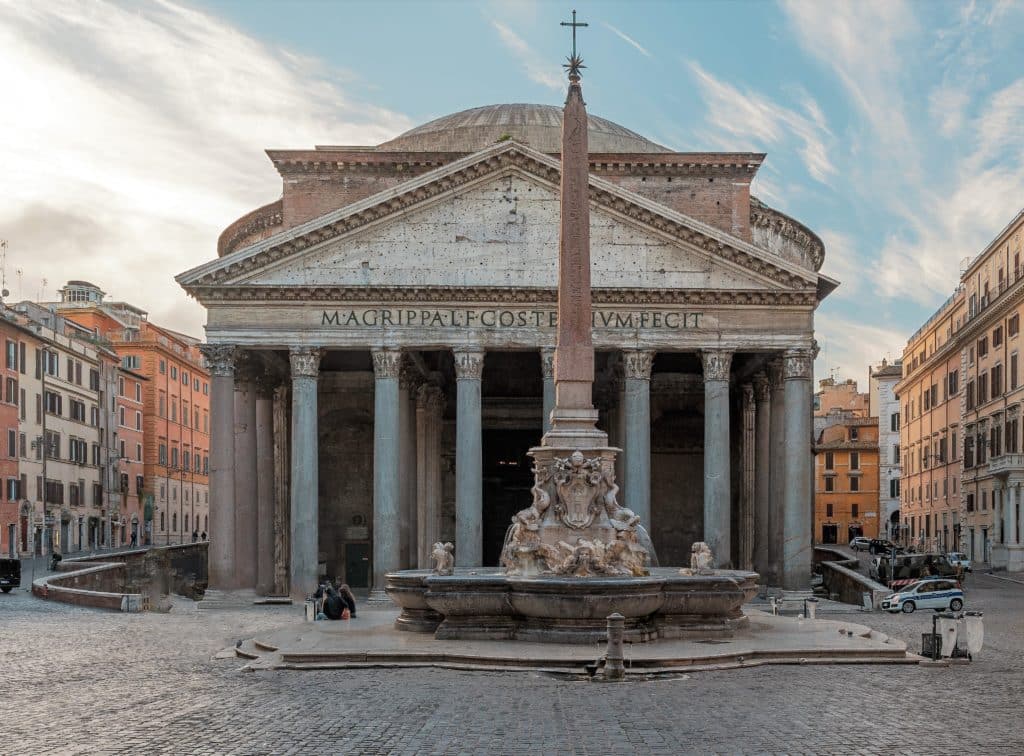
The Apprenticeship Model: A Journey toward Mastery
A Master of . . .
The Latin word magister (teacher, captain, director) is the root for our English word “master.” The title “Mr.” is also an abbreviation for “master.” When we say “Good morning, Mr. Jones,” we might as well say “Good morning, Master Jones.” How is it that any man can be given the designation “Mr.” or “Master”? Connected to the idea of being a teacher, director, or captain is the idea of having authority—authority to lead and teach. Perhaps any grown man worthy of the title “Mr.” should have authority over his own affairs: his life, vocation, and home. Similarly, the female equivalents to “Mr.”—”Mrs.,” “Miss,” and “Ms.”—all derive from the English word “mistress.”
The idea of mastering an art is connected to having the ability to teach that art. “Mastery” of something (from playing the piano to painting to carpentry to gardening to dentistry to law) means having a comprehensive knowledge of the art and superior skills when performing it. In the medieval period, a teacher, after being fully trained, might be granted a magister artium (MA)—a degree stating he was a “master of the arts” and thus qualified to teach others.
The Journey from Apprentice to Master
Apprentice (Assistant, Learner, Novice, Beginner, Neophyte, Greenhorn)
Throughout the Middle Ages, most trades (blacksmithing, shoemaking, baking, carpentry, stone masonry, etc.) were controlled and operated by guilds. These guilds also created a community for the tradesmen and often became influential political bodies as well. Typically, a master craftsman (say, a blacksmith) would take on an apprentice (a “learner,” from the Latin apprendere, “to lay hold of, grasp”) who would study and work under the master in order to learn the trade. After a few years of training as an apprentice, the apprentice would gradually acquire enough skill to warrant being paid for his work as a craftsman, even if he was not yet a master craftsman.
The apprentice might start working for and under a master as young as age 10 to 15 (in the Middle Ages), and an apprenticeship would last for a period of 3 to 4 years or more. The apprentice first would learn the most basic and rudimentary skills by imitating his master, but he also had the advantage of seeing the master at work and engaging him in conversation and questions, as well as the opportunity to try out new skills beneath the watchful and correcting eye of the master.
Journeyman (Associate, Peer, Competent Craftsman, Day-Traveling Worker)
Once the apprentice acquired proficient skill in the trade, he would enter a second phase of training and work as a competent tradesman. During this second phase, the tradesman-in-training was called a journeyman and was no longer regarded as a novice to the profession. A journeyman was still under the supervision of his master, but he could begin to work on viable projects and be paid in the marketplace for his work. A journeyman was indeed on a journey—a journey from beginner to expert, or from learner to teacher. The journeyman was also a sojourner in another way: He would often take trips to visit other masters or to provide services to customers, whereas the apprentice was nearly always at the side of the master. In fact, the name “journeyman” is derived from the Latin diurnum, meaning “day” or “of one day.” The journeyman could be paid a daily wage, as he was now skilled enough to be hired and was ready to leave the shop of his master, taking day trips as necessary to perform his work. The journeyman was, therefore, a competent, job-worthy craftsman who was no longer a beginner or apprentice.
The journeyman, however, was not yet a master. In fact, a journeyman normally would have to work for several years, still under the supervision of his master, until he acquired mastery of his art or trade. When was he able to join the ranks of the masters? When he produced a masterpiece. In many guilds, once a craftsman produced such a qualifying masterpiece, the entire guild would assess the work, grant him the designation of master, and keep the masterpiece as a possession of the guild.
The Master (Mentor, Expert)
After rising to the level of master, the master craftsman would then be permitted by the guild to take on apprentices of his own and perpetuate the process of training others in the art. The master (a good one, anyway) in effect was also a mentor—one who guided and coached not only the hands of his apprentice but also his mind.
In this medieval context, as well in the contexts of the fine arts, the word “master” is a positive word. Generally, we appreciate the artwork of a master painter or musician (perhaps a virtuoso) or the craftsmanship of a “master” carpenter. The word “master” does have some negative connotations, however, especially in the aftermath of the American Civil War, since we may associate “master” with white slave owners. The word may also conjure up ideas of one group having “mastery” over another as a kind of exploitation or domination.
Still, mastery in the medieval guild and professional tradition can be a rich source of renewal and inspiration. Even in this modern moment, the apprenticeship model for training and education is growing and esteemed. Software and computer training employs this model, as does the military in various ways, and so do many facets of corporate training. Even the typical business internship can follow the apprentice model to some degree. In addition, the model has always been present, to varying degrees, in medicine (with resident training programs), architecture, the culinary arts, carpentry, electrical work, plumbing, and yes . . . education.
The Apprentice Model in Education
In American colleges, a newly hired professor is designated an “assistant professor.” After a period of years, and after having shown proficiency in teaching, research, and publishing, a professor may be titled “associate professor” (related to the Latin socius, “partner, ally, companion”). After even more teaching, research, and publishing—particularly if the professor publishes a “masterwork”—he or she might be designated “full professor” (sometimes “distinguished professor” or simply “professor”).
Even the progression from college student to graduate student partakes of the apprentice model. A graduate student can be perceived as kind of journeyman—one who is no longer an apprentice student and is able to teach (for pay) while in graduate school. Once receiving his or her master’s degree or doctorate, such a student becomes a “magister” or “master” and can teach without the supervision of other teachers.
This model can also be applied to educators in a K–12 school or homeschooling community. A teacher new to classical education at a classical school, with no teaching background, will need to learn the art of teaching. A brand-new teacher is thus an apprentice teacher; we might even say he or she is new enough to be a student of . . . teaching. We might properly call such a new teacher a novice teacher or an apprentice teacher.
After a teacher has been teaching for a few years and trained by other master or “mentor” teachers, she might properly become able to teach without as much supervision and oversight as she needed when an apprentice. At this point, she becomes a “journey” or “journeyman” teacher, ready to spend her “days” serving as a competent teacher in the classical tradition. She is still on a journey, however, toward mastery. Her ultimate goal is not merely to be competent, but to be skillful, informed, formed, and wise enough to train and mentor new apprentice teachers—and thus to perpetuate the meaningful training of classical educators.
A Word about Names and Levels
On ClassicalU.com, we have chosen to emphasize the 3-step process of the apprentice model as a “journey” that each classical teacher should take toward mastery. We have used the language of “Level 1,” “Level 2,” and “Level 3” as alternative ways of highlighting this 3-step process, and some schools and homeschools may be content referring to a teacher as, say, a “Level 2 teacher.” We do, however, use the words “apprentice,” “journeyman,” and “mentor”—or “assistant,” “associate,” and “mentor”—for these 3 levels. We have substituted “mentor” for “master” because of the connotation that “mentor” has of training and guiding others—ideally what a master teacher would do. Schools might happily prefer and use the word “master” for Level 3, and some might qualify such teachers as “master teachers who are mentors.”
Schools could also choose other traditional designations for these 3 levels. Borrowing from the monastic tradition, a new teacher could be called a “novice,” for example. It is possible to adopt the titles from college education: “assistant educator,” “associate educator,” and “distinguished educator,” or perhaps “mentor educator” or “master educator.” We don’t think the titles are vitally important, but we do believe moving through 3 levels of training, from beginner to advanced to expert, is important and that we should have a clear path before us upon which to travel, with signposts along the way.
We have also added a “Level L” for leaders and administrators. While those leading classical schools and homeschooling communities need to know a good deal about education and teaching, they also need training particular to their roles as leaders. By choosing the word “leader,” we opted for a word with solid English roots, from the Middle English laedan, “to lead, guide, conduct.” (We could have chosen “duke” from the Latin dux, “leader, director, general,” but there are not too many classical school or homeschool leaders wanting to be called “duke”!)
Three-Level Training Everywhere Else
The 3-level model for training is nearly everywhere. We find it in the trades, the arts, the professions, and even sports. If you would like to become a master wine expert—a master sommelier—then you will move through 3 levels, from certified sommelier to advanced sommelier to master sommelier (of which there have only ever been 147 since 1997).* In many churches, a new pastor is called an assistant pastor and is often mentored and trained by an associate pastor or senior pastor. Christian discipleship certainly entails a kind of mentorship, and a disciple is not only a follower but also a learner (from the Latin discipulus, “student”). The model of Jesus taking 12 disciples has been widely studied and emulated; medieval monasteries were often founded by 12 monks and an abbot. Some have thought that a dozen students comprise the ideal class size. The table below lists a number of 3-level approaches to training found throughout our culture—but there are many more.
We think this 3-level model is traditional, classical, wise, and practical. We encourage schools and homeschooling communities to adopt this model, even increasing compensation as teachers move through each level. In our view, Level 3 mentor teachers should be given a reduced teaching load in order to teach apprentice or assistant teachers. What if a mentor teacher taught 60–80% of the time and observed, trained, and coached new teachers the rest of the time? What if a “principal” was a “principal teacher” (meaning the “first” teacher) who still spent 20% of his or her time training teachers?
Training by Persons
A note about the word “apprentice” and the apprentice model: An apprentice in normally trained by another person, ideally a master or mentor. We might call to mind Christ’s words in Luke 6:40: “A student is not above his teacher, but everyone who is fully trained will be like his teacher.” To be trained by a person means personal, “in person” training. How can we at ClassicalU personally train teacher apprentices in person by means of video, forums, and digital media? The answer is we cannot do this fully, only in part. Real persons (the teacher trainers recorded on ClassicalU) do provide real and valuable training online. However, nothing rises to the effectiveness of in-the-flesh, face-to-face training. It is for this reason that ClassicalU should not be regarded as a “complete package” of teacher training or faculty development. We encourage teachers in schools and co-ops to develop faculty teams in which teachers regularly observe one another and discuss the craft of teaching while cultivating collegial friendships. We encourage new classical teachers to seek out mature, experienced classical teachers who can serve as personal mentors. Here is a hat-tip to our good friend Andrew Kern and our colleagues at the Circe Insitute. Andrew runs an in-the-flesh apprentice program that is very worth taking if you can make a way.
ClassicalU hopes to play a meaningful role in the training of classical teachers around the English-speaking world, but it will be a supportive role, working with teachers and leaders who value face-to-face fellowship, friendship, and service.
*We recommend the documentary Somm (2012) for an entertaining peek into what it means to train to become a master sommelier. The movie follows four men all preparing for and then taking the master sommelier examination. If you like wine and teaching, you’ll find this movie at times inspiring and astonishing.








Responses